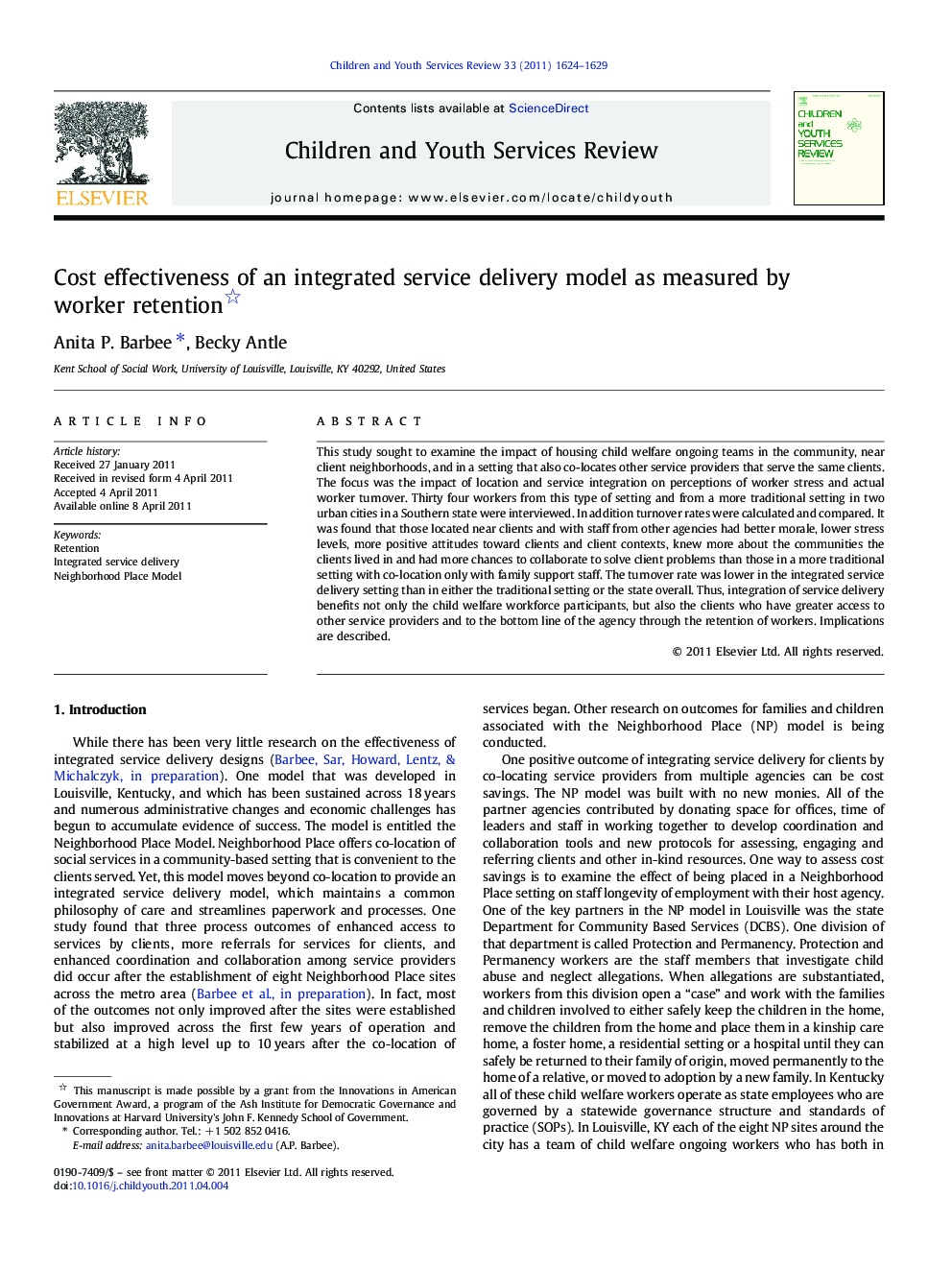| Article ID | Journal | Published Year | Pages | File Type |
|---|---|---|---|---|
| 346148 | Children and Youth Services Review | 2011 | 6 Pages |
This study sought to examine the impact of housing child welfare ongoing teams in the community, near client neighborhoods, and in a setting that also co-locates other service providers that serve the same clients. The focus was the impact of location and service integration on perceptions of worker stress and actual worker turnover. Thirty four workers from this type of setting and from a more traditional setting in two urban cities in a Southern state were interviewed. In addition turnover rates were calculated and compared. It was found that those located near clients and with staff from other agencies had better morale, lower stress levels, more positive attitudes toward clients and client contexts, knew more about the communities the clients lived in and had more chances to collaborate to solve client problems than those in a more traditional setting with co-location only with family support staff. The turnover rate was lower in the integrated service delivery setting than in either the traditional setting or the state overall. Thus, integration of service delivery benefits not only the child welfare workforce participants, but also the clients who have greater access to other service providers and to the bottom line of the agency through the retention of workers. Implications are described.
